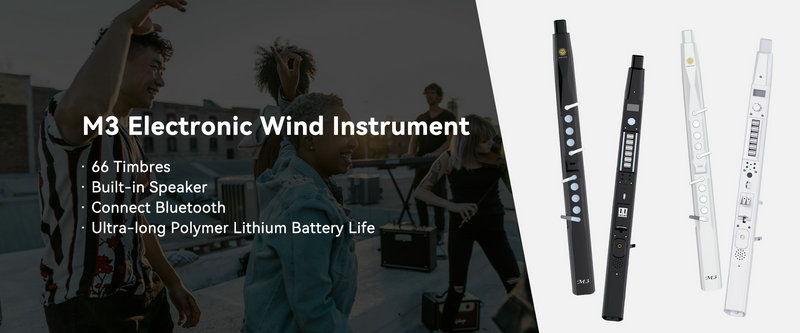Electric wind instrument players may face the following challenges:
Technical aspects:
Finger dexterity and coordination: Just like traditional wind instruments, electric wind instruments also require high finger dexterity. Players need to accurately control the keys or buttons to produce the desired notes. Coordinating finger movements with breathing and musical rhythm is a challenge that requires long-term practice and training. For example, rapid passages or complex musical phrases may pose difficulties in finger coordination26.
Breath control: Breath control is crucial for wind instrument players. In electric wind instruments, although there may be some differences in breath control compared to traditional ones, players still need to master the skill of using breath to control the intensity, duration, and pitch of the sound. Maintaining a stable and appropriate breath flow while playing is essential for achieving good musical expression, but it can be challenging, especially for beginners1.
Sound adjustment and manipulation: Electric wind instruments often have various functions for adjusting sound, such as changing timbre, adding effects, and adjusting volume. Players need to understand and master these functions to create the desired sound effects. However, the operation of these electronic functions may require a certain level of technical knowledge and proficiency, and it takes time to explore and master how to use them effectively to enhance the musical performance1.
Musical performance:
Expressiveness and musicality: Although electric wind instruments offer more possibilities for sound creation, players still need to have a deep understanding of music theory and musical expression to bring out the musicality of the instrument. Expressing emotions and artistic conception through playing requires not only technical skills but also musical sensibility and creativity. How to make the performance more appealing and touching is a challenge for players1.
Playing in ensembles: When playing in an ensemble with other instruments, electric wind instrument players need to coordinate with other musicians, including matching the rhythm, intonation, and musical expression. This requires good communication and cooperation skills, as well as the ability to adapt to different musical styles and performance environments. In addition, the balance of sound between the electric wind instrument and other instruments also needs to be considered to ensure a harmonious overall effect7.
Equipment and maintenance:
Equipment reliability: Electric wind instruments rely on electronic components and circuits. There may be issues such as signal interference, battery life, and component failure. These problems can affect the normal performance of the instrument during playing. Players need to ensure the reliability of the equipment by choosing high-quality instruments and maintaining them regularly4.
Maintenance and repair: The internal structure of electric wind instruments is more complex than that of traditional wind instruments. When there are problems with the instrument, it may require professional knowledge and skills for maintenance and repair. In some cases, finding professional repair services may also be a challenge, especially in areas where such services are not readily available4.
Adaptation to different musical styles: Electric wind instruments are suitable for a wide range of musical styles, but players need to adapt to and master different playing techniques and expressions for each style. For example, playing classical music, jazz, and popular music requires different interpretations and performance methods, and players need to continuously explore and practice to adapt to various musical styles.
SUNRISE MELODY M3 Electronic Wind Instrument - The best-selling Electronic Wind Instrument
. 66 Timbres
. Built-in Speaker
. Connect Bluetooth
. Ultra-long Polymer Lithium Battery Life



